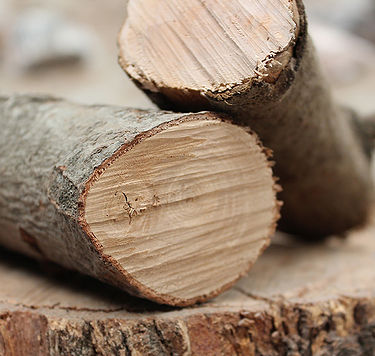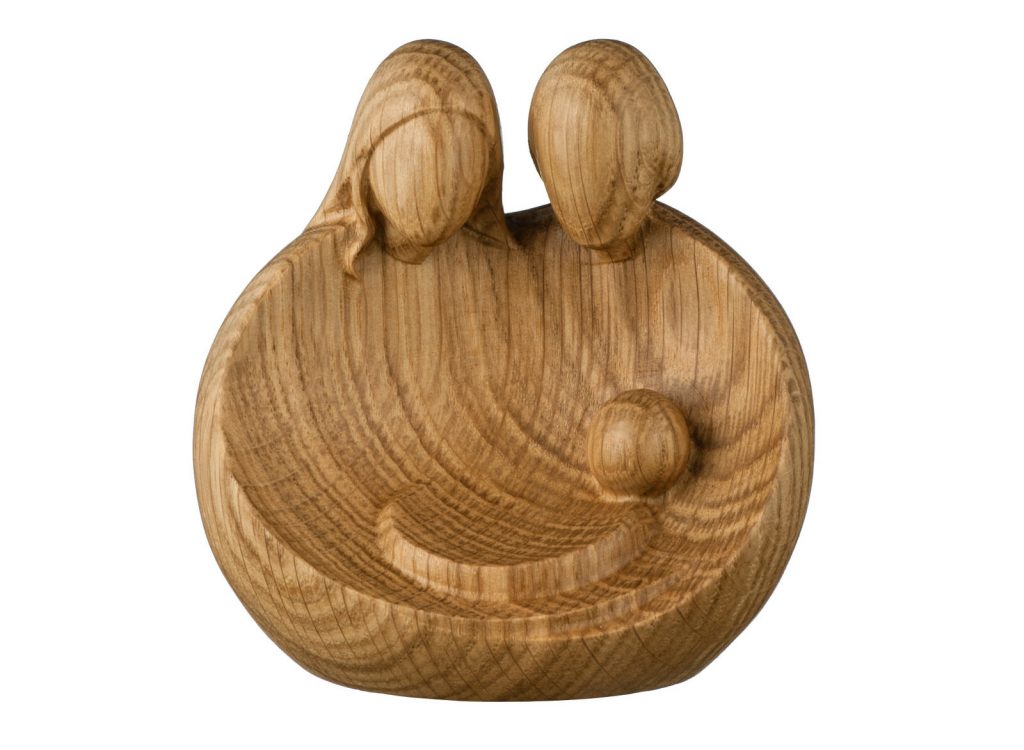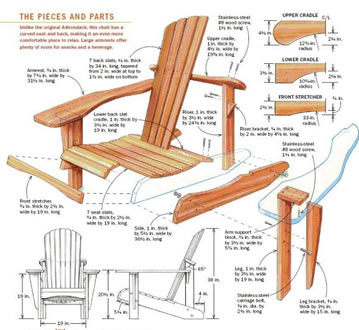
Woodcarving has secured an erroneous negative opinion due to the challenges aspiring woodcarvers face with getting started. This opinion is that the craft of woodcarving is extremely difficult and demands all your energy.
This is true…only if you use the wrong type of wood for your carving jobs.
Woodcarving requires the woodcarver to understand wood and choose the right type of wood for the right task. In this post, we will discuss how to make the right choice, as well as the types of wood for carving available to you.
Choosing the Right Types of Wood for Carving
Before starting as a woodcarver, you must understand the basics of wood and the different types. Choosing the right wood for a particular project is part of the basics. Now, to choose the right type of wood, here are the tips you must keep in mind:
- Let the function determine your choice of wood – The purpose you intend to put your woodcarving skills to the test for is important in choosing the right wood. When carving domestic items that must be able to absorb moisture, then hardwood is the best choice due to its natural waterproofed state. If the item is a bowl, further considerations of its use must be made. For example, if you intend to put oil in it, a bowl made from oak must be crossed out because it will be stained.
- Decorative pieces are different – If you intend to craft a decorative piece with limited physical use, softwood is your best option. Softwood is much easier to carve using traditional tools than hardwood.
- Ensure the wood is safe – Pieces of wood emitting strong smells should be avoided, as well as toxic wood that can cause allergies. If a piece of wood shows outward signs of defects, it may mean that its interior part is defective. Thus, you are expected to look out for these signs and avoid using any defective pieces when found.
Types of Wood
FruitWood
This wood type gets its name from the type of trees it is gotten from. The fruitwood is a product of the apple, pear, and cherry tree. Fruitwood is fine-grained and excellent for producing domestic items such as bowls and spoons. It is generally recommended that you carve fruitwood while it is a bit green as it becomes extremely hard as it dries up which makes it susceptible to cracking.

The features of fruitwood include:
- Hardness as it dries up which makes fruitwood a hardwood.
- It is close-pored this means it does not absorb water and is great for carving kitchen utensils.
Oak
The popular oak wood from the popular oak tree is one of the hardest types of wood out there. This means carving oak will definitely be a task you would need to spend more time executing. It is highly durable and aesthetically-pleasing to look at which is why it is used to produce furniture, wine barrels, and other items that require durability to function properly.

The features of oak wood include:
- Highly waterproof which makes it an excellent choice for producing wine caskets and barrels.
- It is categorized as hardwood which means carving a piece of oak requires some effort. Thus, it is not advisable to use oak wood for ornamental pieces.
Mahogany
The natural aesthetic of mahogany makes it one of the hardwoods carvers turn to when carving decorative pieces. Mahogany is reddish-brown hardwood with straight wood grains. Unlike other hardwoods, mahogany can be carved across or along its wood grain, depending on your requirements.
Its features include:
- It is relatively odorless and accepts stains well, which means you can use it to make domestic utensils.
Black Walnut
Although basswood wins the popularity trophy, walnut takes its spot as the most popular hardwood used by woodcarvers. It is popularly used for whittling, and it has natural straight wood grains, which means you must cut it following the grain. Walnut has an excellent finish when carved, and you may not need to do any post-processing after using it.
The features of this wood type include:
- Walnut is relatively waterproof, which means you can use it to make domestic items that come in contact with water.
- Walnut produces a little odor, but its odor level is tolerable.
Lime Wood
Lime wood is another wood type that is good for carving because of its strength and stability. It is a softer wood with a high workability level but is still considered a hardwood overall. It won’t break at the edges like other softwood types and leaves you with a smooth and clean surface when carving. It has a straight grain and even texture, making it ideal for carving and whittling.
Lime wood and basswood are extremely similar, with the biggest difference between the two being their continent of origin.
Other features of this wood type include:
- Lime wood has an even pale yellow color and gradually darkens with time. It has a natural luster and is soft and light in weight.
- Lime wood is the ideal wood type for shallow wood carving.
Soft Wood for Carving

Basswood
In terms of woodcarving, basswood is the Holy Grail for woodcarvers and by far the most popular wood used. This is one of the most prominent types of wood for carving. Its popularity is based on two very important factors. One; it is the easiest wood you can work with and two; the wood produces a natural aesthetic finish. These features make it an excellent choice for carving domestic utensils as well as, decorative pieces.
Other features of basswood include:
- An odorless wood that is comfortable to work with which means you do not have to worry about your workstation smelling for a while.
- Anesthetic and natural finish which means woodcarvers can work across or along the wood grain without having to worry about it spoiling your tools.
- A softwood that is really easy to work with and accepts wood stains excellently if you intend to make spoons or bowls with it.
Black Walnut
Although basswood wins the popularity trophy, walnut takes its spot as the most popular hardwood used by woodcarvers. It is popularly used for whittling and it has natural straight wood grains which means you must cut it following the grain. Walnut has an excellent finish when carved and you may not need to do any post-processing after using it.
The features of this wood type include:
- Walnut is relatively waterproof which means you can use it to make domestic items that come in contact with water.
- Walnut produces a little odor but its odor level is tolerable.
Balsa Wood
Balsa wood is also known as Ochroma Pyramidale. It is one of the softest wood types for carving and has a resisting force of just 400 Newtons. Balsa wood is very similar to basswood; however, basswood offers more durability and is less prone to warping.
Because Balsa wood is so soft, it can easily deform. This softwood for carving is best for those just starting out or those who want to introduce a younger child to whittling and wood carving.
Other features of Balsa wood include:
- Balsa carvings are very light, making the wood stand out more when it is picked up. The pale white color of the wood is distinguishable from other wood types.
- Balsa wood is so soft you don’t even need to have carving knives. Only basic tools are required, which gives new carvers more confidence while teaching them basic carving skills.
White Pine
There are pine and white pine wood varieties, and the former is really hard to carve while the latter is softer and easier to carve. White pine wood is commonly used for making furniture and decorative pieces due to its durability.
Its features include:
- Enhanced durability and hardness make it possible for you to use a chainsaw to cut through it.
Butternut
This is a softwood which means it is easy to carve compared to other alternatives. When carved, you get a pinkish finish, and it does not require extensive post-processing work.
Butternut is also less expensive when compared to basswood, which makes it an excellent option for you to consider when searching for softwood.
- It takes stains well, which makes it a good option for making kitchen utensils
- It is also an excellent option for whittling
Mahogany
The natural aesthetic look of mahogany is making it one of the hardwoods carvers turn to when carving decorative pieces. Mahogany is reddish-brown hardwood with straight wood grains. Unlike other hardwoods, mahogany can be carved across or along its wood grain depending on your requirements.
Its features include:
- Relatively odorless and accepts stains well which means you can use it to make domestic utensils.
White Pine
There are pine and white pine woods and the former is really hard to carve while the latter is softer and easier to carve. White pine is commonly used for making furniture and decorative pieces due to its durability.
Its features include:
- Enhanced durability and hardness that makes it possible for you to use a chainsaw to cut through it.
Butternut
This is a softwood which means it is easy to carve compared to other alternatives. When carved, you get a pinkish finish and it does not require extensive post-processing work.
Butternut is also less expensive when compared to basswood which makes it an excellent option for you to consider when in search of softwood.
- It takes stains well which makes it a good option for making kitchen utensils
- It is also an excellent option for whittling.
What Is the Difference Between Softwood and Hardwood?
Now that you know that wood can be classified as either hard or softwood, it’s time to learn a few of the differences between these wood types.
Hardwood is considered a more versatile material and can be used for a number of different applications, including furniture, flooring, musical instruments, and construction. You can also find hardwood available in various wood species, colors, and specifications.
Hardwood also offers the woodcarver a higher level of strength and durability. So, if you have a project that requires a high level of durability, you want to choose hardwood over softwood.
Softwood has a great aesthetic appeal and can be used for many applications, including furniture, decking, and external joinery. It is a more flexible wood that is lighter in weight compared to hardwood. It is also much less dense.
What Are Some Alternative Wood Types for Carving?
Looking for alternative wood species for carving in addition to what we have already mentioned above?
Soft Maple
Soft maple, also known as silver maple, is a great wood type for carving. Soft maple has a straight grain with the potential for waves and also has a fine and uniform texture. It is much easier to carve with soft maple than its hardwood counterpart – sugar maple. Soft maple is slightly softer.
Birch Wood
Birch wood is another favorite wood type used for carving. It is a green wood but is incredibly easy to cut. Its close grain allows for a smooth finish. Birch wood may be hard to carve using simple hand carving tools, however. It requires a lot of practice and muscle. For this reason, birch woodcarvers typically use power tools, making it a better wood type for professional carvers.
Best Types of Wood for Carving
When choosing the best types of wood for carving, it really comes down to your needs at the moment and your skill level, the size of your desired project, your design, and your budget. Once you know the answers to this question and learn more about wood identification, choosing which wood type would be best will be easier.
Conclusion
Other notable mentions include cherry, red oak, and Tupelo. These wood types also have a lot to offer every woodcarver looking to experiment with wood.
